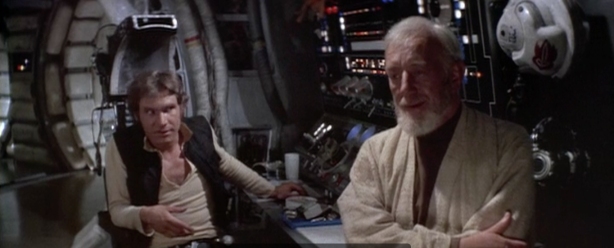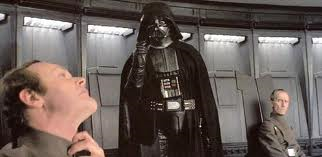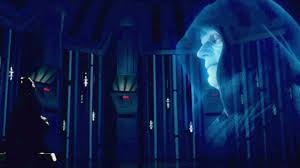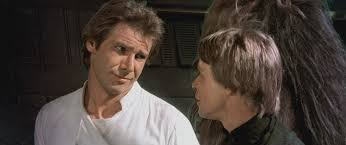Editor’s Note: Today’s guest post come from US Army officer Jon Jeckell, who studies complex adaptations to war and has been analyzing science fiction since the days of usenet. Here he continues a series of posts on the Jedi role in warfare during different periods in the Star Wars universe.
In the first post in this series, The Jedi Way of War, we looked at the tragic entangled fall of both the Jedi Order and the Old Republic. This study further explores the role of Jedi in warfare and society, focusing on the Jedi restoration and role in the Rebellion and New Republic.
Previously we discussed how the Jedi were a uniquely poor choice to serve as leaders of an Army because their order’s particular values and rare abilities ironically proved to be fatal disabilities in that role. How did the surviving embers of the once powerful beacon of the Force rekindle itself?
First, let’s look at what the surviving Jedi did. Obi-Wan Kenobi went into hiding under the clever alias of “Ben” Kenobi and watched over the promising scion of one of the most powerful, albeit flawed, Jedi ever until he came of age. Before fall of the Jedi Order, they sought out and trained promising candidates throughout the galaxy. Certainly births of other force-adepts throughout the galaxy didn’t suddenly cease with the rise of Palpatine, so why didn’t Obi-Wan or Yoda seek out and train other Jedi, rather than wait for him to come of age? Why did they wait until he was much older than the Jedi had previously begun before training Luke? Why not secretly recruit and train force-adept candidates and participate in the Rebellion against the Empire? Couldn’t they have saved countless lives had they done something earlier?
Accounts of events vary between Anakin Skywalker’s fall and transfiguration into Darth Vader and when the Emperor dissolved the Imperial Senate, but we know the Jedi and several other entities (such as the Wookiees) had irreconcilable differences with the new management. The vast majority of the population probably accepted the change given the sudden onset of peace in the galaxy after the downfall of the Jedi, enhanced by the formidable Sith powers of deception and heavy doses of commitment bias by everyone who supported all the measures that wrought Palpatine’s rise to power. The devastation of the Clone Wars tainted the Jedi and everything else associated it, doubtlessly with the help of Imperial propaganda. Popular contempt towards droids, Jedi and all else reminding them of the Clone Wars pervaded the era following the Clone Wars (Episodes IV-VI). Although Luke’s Uncle Owen feigned ignorance of the reclusive and obscure “Ben” Kenobi’s Jedi status, he was clearly dismissive of him, as was Han Solo.
A senior Imperial Navy officer also boldly demonstrated his contempt for the Jedi to Darth Vader aboard the Death Star. The surviving Jedi had to remain hidden from everyone, not just government officials, who in many cases did not need to coerce citizens into reporting them. Finding new pupils to restore the Jedi Order was too risky with the whole galaxy potentially against them, and could actually be counterproductive. Although no records exist to substantiate this theory, the Emperor would have made it a priority to have agents locate and kill, co-opt, or closely monitor all the force-adepts he could find to prevent rivals that would matter from arising.
But were Yoda and Obi-Wan prepared to allow the Jedi Order to go extinct forever with them, or how would they know when the time was right to begin training new Jedi? Yoda assuredly used the force as a guide, but there were also social, economic, and political forces that drove the process within their lifetime. Many rebellions begin within a generation of the creation of a new order before they can consolidate power.[1] Dictators like Palpatine wish to maximize the benefits of their work and secure themselves against rivals. It would not take long for discontent with the regime to settle in and support for the Rebellion to build beyond fringe elements.[2] With popular sentiments favoring the new Empire, the risk of having either of the two known remaining trained Jedi in the galaxy venture out to recruit outweighed any benefits and further substantiated the Emperor’s claims that they had tried to seize power for themselves. Some, like Bail Organa, Senator from Alderaan, doubtlessly hoped to achieve meaningful reforms from within the government prior to the Emperor’s complete seizure of power. Any raids or direct action against the Empire could only further discredit them.
But in consolidating power, he also destroyed the economy and disrupted government services. A dictator’s first duty is to maintain the circle of people who keep him in power (and keep that number to a minimum).[3] In centralizing power, he clamped down on local autonomy and decentralized coordination, and lost the ability to respond to local conditions. Centralized, planned economies and governments face the knowledge coordination problem, which inevitably crashes the economy and political system.[4] Charm had reached its limits, as had sheer force of will of the most dedicated bureaucrats because of the impossibility of predicting and satisfying the myriad local needs while retaining a monopoly of power. Even his most loyal and well-meaning officials could do nothing to stop the downward spiral. Social capital reached the tipping point where cooperation catastrophically broke down. Han Solo’s desertion from the Imperial Navy to take up smuggling after becoming disillusioned is emblematic of both the malaise within the government and the terrible state of the economy. Lando Calrissian’s plight with Bespin also showed how difficult it became to maintain an honest business. Corruption ran rampant across the Empire as patronage networks, both intentional (to prevent the rise of rivals) and unintentional emerged from the systematic breakdown of trust. As the economy spiraled, the Empire needed to relentlessly increase the amount of coercion it employed to extract the resources needed to keep the Emperor in power. Dissolving the Imperial Senate and appointing governors to take care of local matters is symptomatic of this devolution, as is the creation of the Death Star. The dispersed nature of the galactic economic system, low population density, and widespread availability of hyperspace capable craft made capturing the populace and imposing extractive institutions extremely difficult.[5]
Several other factors were favorable to rise of the Rebel Alliance. First, a very significant portion of the key participants were born after the Clone Wars (Luke and Leia’s birth coincided with the end of the war) or were too young to remember the horror and hardship their parents experienced. While this led them to make some mistakes combat veterans would not have, it also gave them a fresh perspective on warfare which helped them avoid playing to the Empire’s strengths.[6]
The founders of the Rebellion maintained a high degree of asabiya and were able to create inclusive institutions that formed a new basis for cooperation. The early Rebellion seems to have originally been comprised mostly of humans from the frontier between the Core and the Rim, with a narrow ethnic composition. However, it absorbed a very diverse range of ethnicities and species while maintaining a high degree of trust, cooperation, and unity. It was tightly integrated and egalitarian vertically across the social spectrum from the beginning.[7] High social status members took on at least their share of the risk, if not more, and the group displayed an amazing degree of social mobility. While Han Solo’s meteoric rise could cynically be explained as favoritism, Lando Calrissian and several others also rose to the rank of General rapidly.
Trust and cohesion in the Rebel Alliance is critical in many ways. It allowed them to operate together in dispersed groups toward common goals, develop specialties, efficiently scale up their ranks, solve complex problems, and learn as an organization. Centralized and hierarchal rebel groups are vulnerable to decapitation by rivals if they don’t have a safe haven, but groups with a safe haven that centralize their organization enjoy these decisive advantages.[8] Hyperspace capable ships and resilient networks allowed the Rebellion to hide in unpopulated areas to avoid decapitation. The centralization process is particularly critical for after victory to prevent cycles of factional infighting.
Luke Skywalker and Princess Leia Organa may have played a key role in quietly fortifying trust within the Rebel Alliance and later in the New Republic, promoting an atmosphere of security and trust that allowed the vast array of participants with disparate aims to reconcile them peacefully and remain part of a cohesive organization.[9]
Prior to the Clone Wars, the Jedi were an extra-governmental institution universally trusted for their selflessness, fairness and impartiality. This is why the Jedi looked upon attachments to the worldly as dangerous: forsaking the material world insulated them from the perception of ulterior motives. They were frequently called in to arbitrate disputes and reconcile quarreling parties. During the Clone Wars they were coaxed into becoming Generals leading vast armies which distracted them from this role and prevented them from seeing the situation clearly and impartially. Some of those who noticed incongruence within the situation and the outcomes they achieved were much more effective in using their skills investigating their suspicions as commandoes and pilots. However, this was insufficient to prevent the downfall of the Republic and the Jedi Order.
But once the Empire was unmasked as a brutal dictatorship, and Obi-Wan was revealed to Luke as a Jedi Knight and General of the Army of the Republic, he immediately took Luke to Alderaan while tentatively providing the most rudimentary of training, rather than shipping him straight to Yoda to begin an accelerated training program. Obi-Wan had reverted to commando raids again.
Luke demonstrated superb natural talent as a fighter pilot and with a blaster, but not vastly out of proportion to others like Wedge or Han Solo, even after he received training on using his abilities. Early on, Luke followed Obi-Wan’s example by using his considerable talent to perform critical, albeit insufficient tasks, like Leia’s rescue mission, destroying the first Death Star, and rescuing Han Solo from Jabba’s Palace. His raid to free Han Solo at Bespin was a disaster, however, and the strategy behind these raids evolved considerably as he learned, culminating in his bid to “rescue” his father, Anakin Skywalker. However, as a pilot, Luke never commanded anything larger than a fighter squadron. All of his friends and colleagues (who survived) became Generals or rose to high-level political positions, but his formal rank remained Commander.
Yoda understood the critical need for force generation, but also encouraged raids once he deemed him ready to face the challenge. Much of Yoda and Obi-Wan’s training seemed to center on learning by testing out interactions with the environment, remaining calm, and building confidence rather than eldritch powers and arcane wisdom. Leaving him this way forced him to reflect and start fresh, shedding the corruption that struck down the generation of Jedi present during the fall of the Order.
While the Rebellion had many political, economic and social factors in its favor without resorting to supernatural explanations, Jedi powers seem to work best in enhancing cooperation and minimizing destructive conflict. Leia was a key leader in the Rebel Alliance from the beginning and repeatedly demonstrated her latent ability to stimulate cooperation. Luke began to rebuild the order as a universally trusted, impartial institution, containing calm, reflective, wise and objective mediators who could increase the benefits and safety of collaboration. Widespread respect for their superb fighting ability in conjunction with confidence in their patience and restraint vastly increases the risks and costs to an attacker, while reducing the benefits achievable through violence or unfair dealings. Note the disdain the Jedi have for offensive weaponry. The Jedi can intercede to impose negative feedback in a conflict to tamp things back down under control and restore cooperation rather than escalating them. A security negotiating environment, as well as the Jedi ability to sense deception, makes both participants more confident, rational, and amenable to mutually beneficial outcomes. Mutually beneficial outcomes are much less costly to enforce, and build further confidence for future interactions.[10]
Finally, while Palpatine’s centralized command structure catastrophically disintegrated upon his death, the death of a Jedi somehow only seems to imbue all of their friends and allies with renewed inner strength and resolve. When Darth Vader cut Obi-Wan down on the Death Star, Luke sequentially shot Stormtroopers in the face with single shots in rapid succession…with a pistol…from a standing position…at 200+ meters away[11]. Perhaps this phenomenon is due to some kind of recondite transference of the force, but the Jedi also continuously expose those around them to their values, habits of remaining calm under pressure, and fighting for cause higher than themselves.

Although Jedi consider blasters to be an uncivilized weapon, Luke (and Leia) are pretty damned good with them.
[1] The Dictator’s Handbook: Why Bad Behavior is Almost Always Good Politics, by Bruce Bueno De Mesquita and Alastair Smith. https://www.goodreads.com/book/show/11612989-the-dictator-s-handbook Look at the revolutionary/counterrevolutionary cycles of violence and purges in the French Revolution(s), the Russian Revolution, the Chinese Civil War, the Iranian Revolution, and the Afghan Civil War. Contrast with groups where power remained diffuse among the members of the group while remaining unified in their goals, such as the English Glorious Revolution, the American Revolution, and the New Republic.
[2] The crawler at the beginning of A New Hope alluded to a number of unsuccessful attacks, but the Rebellion had begun to gain political momentum and had achieved their first success: seizing the plans for the Death Star.
[3] The Dictator’s Handbook
[4] Pg 422 Origin of Wealth: Evolution, Complexity, and the Radical Remaking of Economics https://www.goodreads.com/book/show/22456.Origin_of_Wealth by Eric D. Beinhocker
[5] Why Nations Fail: The Origins of Power, Prosperity, and Poverty https://www.goodreads.com/book/show/12158480-why-nations-fail by Daron Acemoğlu, James Robinson contrasts inclusive institutions that bring general prosperity and political participation hand-in-hand with extractive institutions that are used by elites to harvest wealth for themselves.
[6] Spencer Ackerman (aka Attackerman) criticized the performance of both sides in the Battle of Hoth in this Wired Magazine article “The Empire Strikes Out,” http://www.wired.com/dangerroom/2013/02/battle-of-hoth/ . However, the Rebel strategy and choice of location changed the rules of the game and complicated the playing field, increasing the role of luck in the outcome at the expense of Empire’s greater access to skills and resources. Michael J. Mauboussin provides insights into strategies an underdog can employ overcome a more powerful foe in Chapter 9 of The Success Equation https://www.goodreads.com/book/show/13586925-the-success-equation.
[7] Peter Turchin developed a model explained in War and Peace and War: The Rise and Fall of Empires https://www.goodreads.com/book/show/18246.War_and_Peace_and_War that describes secular cycles for the rise and fall of empires. At least two of his “secular cycles” were present in the rise of the Rebellion—the generational distance from the last war, and the rise of a new power on the frontier, not the core, of the old empire, facilitated by the pressures to unify. States, Ideologies, and Social Revolutions https://www.goodreads.com/book/show/282117.States_Ideologies_and_Social_Revolutions contains a set of studies demonstrating that peasant uprisings normally fail unless the middle class joins them, and highlights the role of religious institutions outside of the government.
[8] Organizations at War in Afghanistan and Beyond by Abdulkader H. Sinno https://www.goodreads.com/book/show/2686729-organizations-at-war-in-afghanistan-and-beyond
[9] Other studies have questioned whether the Galactic Order would disintegrate as local groups opt for independence and secede rather than accept the return of the New Republic. The Realpolitik answer lies with the state of military technology. Spacecraft are free from most constraints that limit economy of scale, as the Death Stars and Super Star Destroyers demonstrated, crossing the threshold of overwhelming even planetary scale defenses. This favors political centralization. Studies questioning the benefits of scaling interpret the single case of the Empire’s flawed implementation as a general rule and cite the success of smaller Rebel ships and fighters. However, such ships could carry commensurately larger compliments of better quality fighter groups and escorts, and not necessarily rely upon a single monolithic system. These ships obviously require vast of resources to build and operate so larger, wealthier groups with the ability to call upon a wider and more diverse network of cooperation provides decisive advantages. Even if the benign elements of the Rebellion refrained from using force to maintain union in the galaxy, balancing participation with local autonomy provides clear economic and political advantages inherent in the scale and diversity of a vibrant cosmopolitan galactic network. This is akin to the military, political, and economic developments revolving around the evolution of the cannon in medieval Europe, which allowed centralization by overwhelming the fortresses of smaller political units. Although new fortress technology evolved to counter the cannon, costs prohibited all but the most wealthy from affording it, such as centralized state powers. Eventually artillery made fortress technology obsolete.
[10] Liars and Outliers: Enabling the Trust that Society Needs to Thrive by Bruce Schneier https://www.goodreads.com/book/show/12046245-liars-and-outliers
[11] Likewise, Obi-Wan suddenly overcame Darth Maul after Qui-Gonn Jinn died. Leia and Han are also superb shots with a pistol too. Observe for yourself how many one-shot hits they achieve at very long distances. Note that the U.S. Army considers anyone who can hit 26 or more out of 30 shots varying from 10 to 31 meters. The maximum effective range of the US military’s 9mm Beretta pistol is 50 meters, meaning the average shooter will hit 50% of the time at that range.





Random comments:
The description of the events between the fall of the Old Republic and the rise of the New was described by Wookiepedia in pretty much the same way.
http://starwars.wikia.com/wiki/Main_Page
In fairness to poor Obi Wan, he did have more on his plate than just getting the new padawan’s training started–delivering some vital intel, for example. And it’s possible that the Force told him that things would work out well starting with that (he dematerialized, but Luke got a kick start and Leia got rescued before the empire could execute her).
I wonder how many mistakes our own governments have made by trying to shoe-horn dispersed societies and fragmented rebellions into models more akin to the Empire than either of the Republics? In Libya, for example, could we have encouraged the new government to just take a cross-section of the more skilled rebel groups into the post-Qadaffi military and turn the rest into police departments for their home villages and tribal groups?
I’m glad you mentioned Wookiepedia, because it’s blocked where I am at right now, so I was deprived of that as a source. I agree Ben had a lot on his plate, but it seemed really odd that they waited so long to train him, especially given the way Yoda put up a fit about Luke being too old to train. Moreover, they really cut it close with Yoda dying pretty quickly after Luke began his training.
As for the second part, you can be sure we’ve made a lot of mistakes dealing with rebellions, but rebellions have been surrounded with more mythology than Star Wars. Rebel groups and the governments that fight them spin their agendas, disposition, and the degree to which they are united. And a group that isn’t unified during the rebellion probably isn’t going to magically get along when it’s over (ala Libya, Iraq, Syria, etc.)
[…] convinced her to remain on Star Trek. At Grand Blog Tarkin Jon Jekyll analyzes why the Jedi are a uniquely poor choice to run a military. Love the […]
I just recently watched “A NEW HOPE” and found myself curious about something. Why on earth would the Rebel Alliance command accept Luke Skywalker as a fighter pilot and allow him to participate in the Battle of Yavin? He was not a trained military pilot. And I don’t see how killing desert rodents, while flying through Tatooine’s canyons would qualify him as a military pilot to be thrown immediately into battle.
A shortage of pilots and nothing to lose?
[…] invested in the Empire itself and the Death Star specifically, the destruction of one Death Star by intergalactic terrorists and the collapse of the Empire following the destruction of the second, would devastate the […]
[…] invested in the Empire itself and the Death Star specifically, the destruction of one Death Star by intergalactic terrorists and the collapse of the Empire following the destruction of the second, would devastate the […]
[…] invested in the Empire itself and the Death Star specifically, the destruction of one Death Star by intergalactic terrorists and the collapse of the Empire following the destruction of the second, would devastate the […]
[…] invested in the Empire itself and the Death Star specifically, the destruction of one Death Star by intergalactic terrorists and the collapse of the Empire following the destruction of the second, would devastate the […]
[…] invested in the Empire itself and the Death Star specifically, the destruction of one Death Star by intergalactic terrorists and the collapse of the Empire following the destruction of the second, would devastate the […]
This rise of calrisian and solo to general comes down to warlordism. They bring followers/resources needed by the terrorist rebels with some degree of charisma. They become propaganda poster boys drawing attention from the real leaders of the rebellion.
[…] Suite à l’explosion de l’Etoile de la mort par les terroristes intergalactiques, et l’effondrement de l’Empire après la destruction de la seconde, cela aurait anéanti les […]
[…] invested in the Empire itself and the Death Star specifically, the destruction of one Death Star by intergalactic terrorists and the collapse of the Empire following the destruction of the second, would devastate the […]